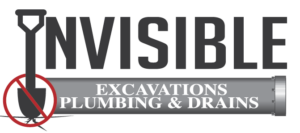One of the most common questions we find ourselves asking when people call in for help addressing a plumbing issue is if the problem is in the storm or sanitary sewer system. Our licensed plumbers can also assist you with leak detection and help you determine if your problem is related to a sanitary or storm system, but it’s also helpful if you have a general understanding so we can better talk through your repair options.
To put it simply,
- Storm sewers carry rain water.
- Sanitary sewers carry sewage.
- But, let’s dive in a little deeper so you have a better idea of how each system functions for your home or small business.
What is a Storm Sewer?
City storm sewers perform two primary functions. First, they collect storm water runoff, or melting snow, and transfer it to local streams, wetlands and lakes. Collecting this water helps to minimize local flooding during heavy rains or periods of fast melting snow.
Second, they help remove litter, sediment and runoff before the water flows into our local waterways. While they help to remove contamination, they are not actually treating the water, so whatever goes into the storm drain is exactly what enters the water source on the other end. You can help prevent storm water pollution by:
- Never pouring paint, oil or other harmful substances down the storm drain
- Checking your vehicle for leaks to keep fuel and oil out of storm drains
- Taking your car to a car wash instead of washing it on the street
Your home may have an underground storm pipe that leads right to the city storm drain system, or your home may have a catch basin or dry well.
The homes most likely to have a catch basin or dry well are:
- surrounded by steep, sloping or lowland terrain or;
- surrounded by rocky, dry or mineral-heavy soil.
Catch basins and dry wells perform one major function: catch and direct water away from your home. They catch water that runs off your roof, driveway, patio, porch, deck or yard (and possibly filtered sanitary water from indoor appliances and fixtures) and use gravity to guide it away from your home instead of collecting around it.
The main difference between catch basins and dry wells is that catch basins have a water-tight underground container, while dry wells are usually a permeable hole in the ground.
What is a Catch Basin?
Catch basins are drainage systems designed to catch and carry water away from your home towards a public storm water system, dry well, or local body of water. While they come in many forms, most have a grate over an angled inlet that leads to an underground concrete, or plastic basin. After collecting in the basin, the water is pumped out or routed through pipes to be released elsewhere.
What is a Dry Well?
Dry wells, more commonly known as seepage or leaching pits, are drainage systems designed to carry water away from your home. Like catch basins, they come in many forms and can serve a variety of household drainage purposes.
Your property may have multiple dry wells, or may have one used in conjunction with a catch basin.
Dry wells are typically dug near the lowest point of the property. The 6-8 foot deep by 4-10 foot wide hole is reinforced with rocks, gravel, brick or concrete. Water usually runs to the underground hole, or dry well, through an underground pipe. Once in the well, the water runs through the rocks, gravel, brick or concrete – a natural filtration process – and into the surrounding soil.
Some additional peace-of-mind uses for dry wells are:
- To augment an aging septic system
- To help manage excess septic system water
- To take water away from plumbing fixtures far from the main septic system
- To alleviate lawn flooding
Do I need a Catch Basin or Dry Well?
Below are just a few signs you may need to improve the drainage around your home with a catch basin or dry well.
- Standing water in your yard
- Dead patches of grass in your yard
- Foul odors
- An abundance of insects, such as mosquitoes
- Water in your basement or garage after a heavy rain
- Mold or mildew on the inside or outside of your home
What is a Sanitary Sewer?
Sanitary sewer systems carry sewage to a wastewater treatment facility where it is professionally treated before it is released to a water source. Sewage that flows through the sanitary system can come from bathrooms, laundry rooms and kitchens in residential or commercial buildings.
Storm & Sanitary Pipe Repair
Invisible Excavations provides a full range of services to inspect, maintain, repair and install dry well, catch basin, storm drain and sewage systems.Whether you suspect a problem, already have a problem, or simply want to know how you can better maintain your home’s drainage, call Invisible Excavations to schedule a visit to your home. We can walk you through a discussion of your options and help you navigate your local plumbing code.
When a storm or sewer drain pipe cracks, the leaking water can saturate the surrounding soil leading to water buildup on your property – a lawn or parking area – or flooding in your basement.
Instead of digging up the broken storm or sewer drain pipe and compounding the cost of excavation with the cost of repairing structures and landscaping, we may be able to line the existing pipe using trenchless technology. Learn more about your trenchless repair options here.

